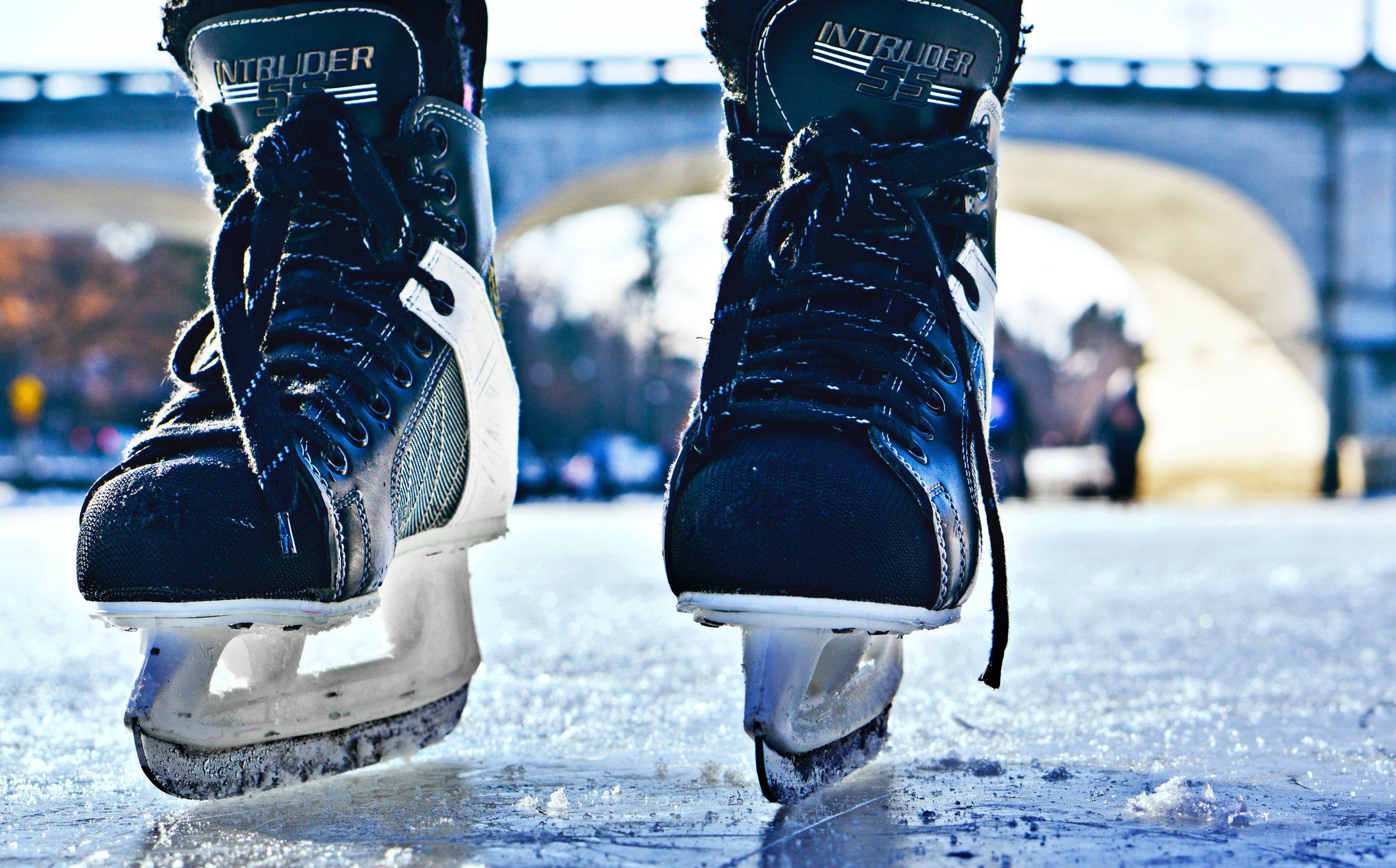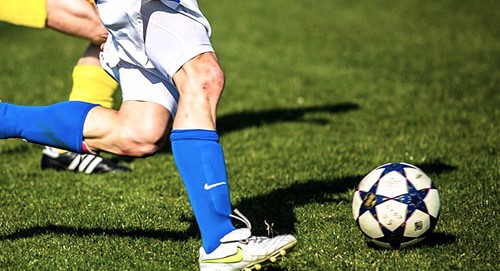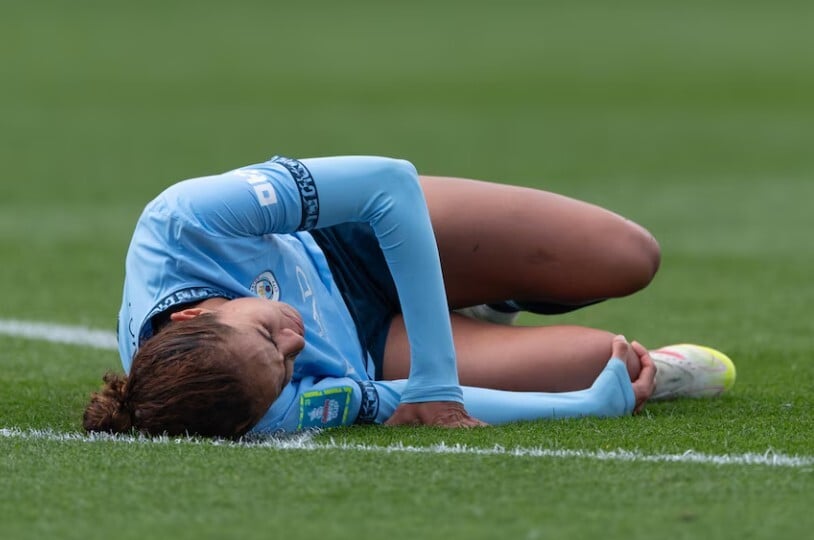5 Things You Should Know About Ice Hockey Injuries

As the month of February kicks off, ice hockey teams across all levels are entering the latter halves of their season, many of them gearing up for a high-energy playoff run. Given the sport’s incredibly fast pace and frequent body contact, the increased intensity during this time of year can put players at a higher risk for getting hurt. With this in mind, we’re taking a look at some of the most important concepts to understand regarding hockey’s common injuries.
Read through these to ensure that once the puck drops, you’re well prepared for whatever the hockey gods throw your way.
Game Versus Practice
Even though games account for only 23 percent of all collegiate athlete exposures (AE) — defined as a single player participating in a single game or practice, 65 percent of all hockey injuries occur during game time. Another way to look at this is that injuries occur roughly six times as often in games as in practice.
To understand why this is, one must consider the violent nature of the sport when played at full intensity. Top hockey athletes can skate at speeds of up to 30 mph and shoot the puck upwards of 100 mph. While penalties prohibit players from certain physical behaviors (e.g. directing contact with their elbows, hitting players from behind), using one’s body to check another player, either at open ice or into the boards, is generally legal — and these sorts of collisions account for more than 50 percent of all injuries. Finally, compared to other contact sports such as football or wrestling, hockey sees few stoppages in play. With all of this in mind, it’s easy to understand why players are much more likely to be injured amid the speed and aggression of game play than at a controlled practice.
Variation
While there are common injuries that routinely occur across all leagues and levels, some variation can be seen as well. For instance, goalies report lower injury rates (2.7 per 1000 AE) than forwards and defensemen (five per 1000 AE), and among the latter, studies show that forwards have a 2.1 times increased risk of concussion. There are considerable differences between genders as well, with men seeing higher rates of injury across all level of play. (It’s important to remember that, even at the professional level, women are not allowed to body check while men are) However, concussions account for a higher percentage of injuries in women’s hockey (17 percent versus eight percent), while men see a higher rate of upper-body injuries. Finally, there has also been some reported variation across styles of play. While European hockey is heavily focused on maintaining possession, Americans favor a “dump-and-chase” style, in which the attacking team shoots the puck into the offensive zone and skates after it at full speed — a style which can put players at a higher risk for dangerous collisions. It’s important that players understand the way in which their style, position, and gender affect their disposition to certain injuries.
Concussions
Given hockey’s high level of contact, it’s no surprise that concussions represent the most common injury across all levels, accounting for 18.6 percent of all injuries, as well as the second-most amount of time lost from practice or games. At the collegiate level, concussions are more common in women’s hockey, representing 22 percent of game injuries and 13 percent of practice injuries.
Lacerations also contribute to the high occurrence of injuries to the head and face. However, leagues have taken considerable measures to decrease this, from penalizing contact to the head to requiring players up to the collegiate level to wear full face masks. Regardless, with the amount of concussions and other head injuries, it’s essential for athletic trainers, players, and coaches to understand how to recognize and treat these conditions.
Body Checking
As we mentioned before, it’s hockey’s uniquely fast play and high rate of body collisions that contribute to many of its injuries. For instance, the acromioclavicular (AC) joint sprain, which accounts for 59 percent of all shoulder injuries, occurs more often once male players reach the age in which they’re allowed to body check. Especially when hit into the boards (legally), players who are checked often have their AC joint placed in a position to absorb a lot of force.
Because of this, body checking has received much of the focus with regard to injury prevention in recent years, particularly in youth hockey. For instance, in 2011, USA Hockey increased the level of play at which body checking was allowed from Pee Wee (11-12 years old) to Bantam (13-14). Despite arguments that kids should learn to check “properly” at a young age, the rules change was followed by a 20 percent decrease in overall injury, with 23 percent drop in fractures and a 41 percent decrease in internal organ damage.
Unique Injuries
Ice hockey’s setting and style puts its players at a predisposition for certain injuries not as common in other sports. For example, the unique athletic movement involved in skating places demands on the pelvis and hip that can be difficult to manage if the player has suffered a past injury to their adductor or has inadequate adduction strength. As such players transition from one leg to the other during a stride, the loss of pelvic control can lead to a groin strain — one of the most frequently occurring ice hockey injuries. Also distinctive to the sport is the syndesmosis injury, or “high ankle sprain.” Hockey skates are stiff enough to support one’s ankle, but the combination of one’s elevation off the ice (due to the skate blade) and the high speeds and quick directional changes while skating can leave the lower leg just above the ankle at risk for rotational injury.
![HR Logo [Recovered]_Full Color Vertical-1](https://blog.healthyroster.com/hs-fs/hubfs/HR%20Logo%20%5BRecovered%5D_Full%20Color%20Vertical-1.png?width=199&height=178&name=HR%20Logo%20%5BRecovered%5D_Full%20Color%20Vertical-1.png)


